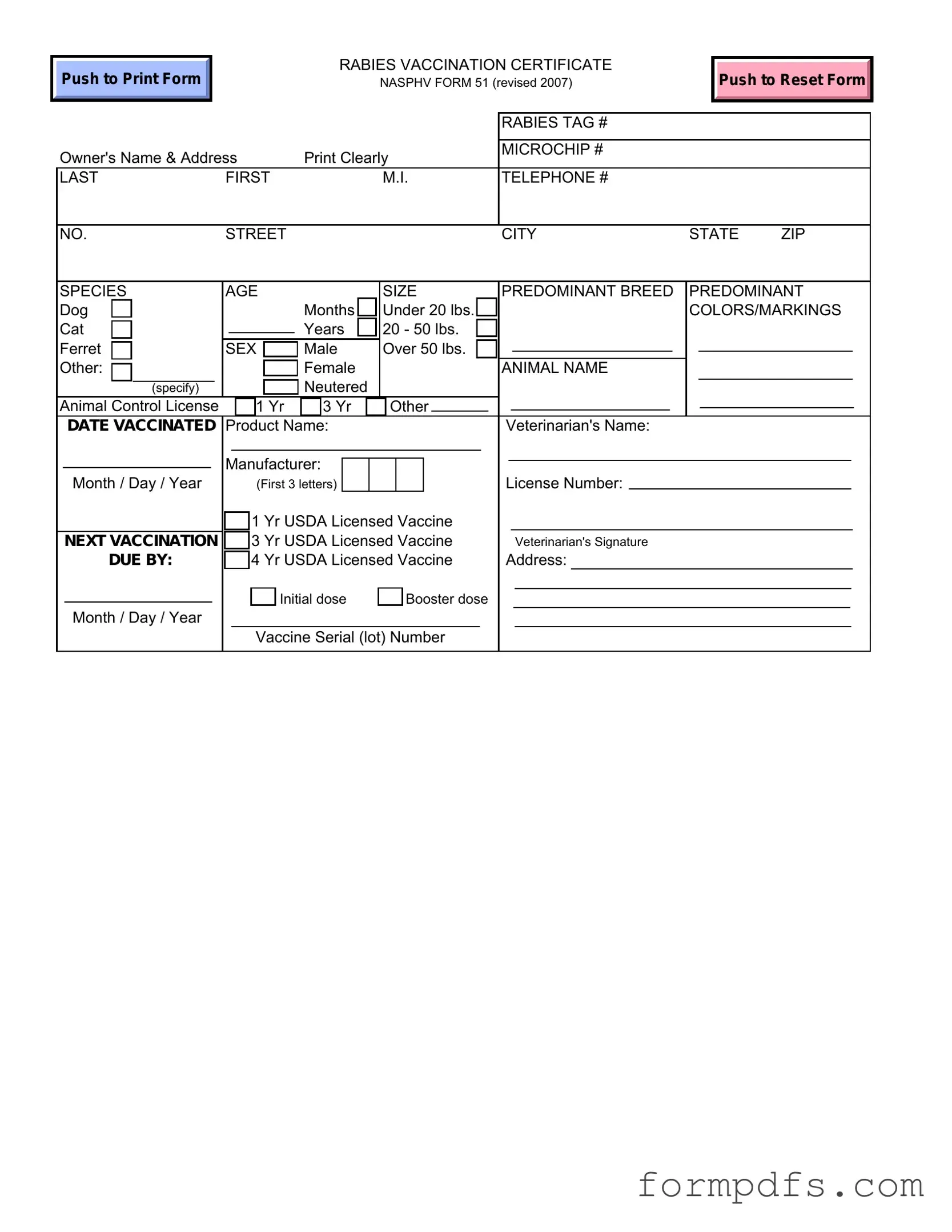What is a Rabies Certificate?
A Rabies Certificate is an official document that confirms a pet has been vaccinated against rabies. This certificate includes important details such as the pet's information, vaccination date, and the veterinarian's signature. It is often required for travel, boarding, or participation in certain events.
Why is a Rabies Certificate important?
This certificate serves as proof that your pet has received the rabies vaccine, which is crucial for public health and safety. Rabies is a serious disease that can be transmitted to humans, so many states and municipalities require proof of vaccination to prevent outbreaks.
How can I obtain a Rabies Certificate?
You can obtain a Rabies Certificate from your veterinarian after your pet receives the rabies vaccine. Make sure to provide your vet with accurate information about your pet, including its name, breed, age, and microchip number, if applicable. Your veterinarian will complete the certificate and provide you with a copy.
What information is included on the Rabies Certificate?
The certificate includes several key pieces of information: the owner's name and address, the pet's species, age, size, predominant breed, and color markings. It also lists the vaccination date, the product name of the vaccine, the veterinarian's name, and their license number. Additionally, it may indicate whether the animal is neutered and the due date for the next vaccination.
How often does my pet need to be vaccinated for rabies?
The frequency of rabies vaccinations can vary based on local laws and the type of vaccine used. Typically, pets receive their first rabies vaccine at around three months of age, with booster shots given every one to three years thereafter. Always consult your veterinarian for specific recommendations based on your pet's health and local regulations.
What should I do if I lose my Rabies Certificate?
If you lose your Rabies Certificate, contact your veterinarian as soon as possible. They can provide a replacement certificate or a new copy of the vaccination record. Keep in mind that having this documentation is essential for various situations, including travel and boarding.
Can I use a Rabies Certificate from another state?
In many cases, a Rabies Certificate from another state is valid, but it is essential to check local regulations. Some jurisdictions have specific requirements regarding the type of vaccine or the timing of vaccinations. Always verify with local animal control or public health authorities to ensure compliance.
What happens if my pet is not vaccinated for rabies?
Not vaccinating your pet for rabies can lead to serious consequences, including legal penalties and the risk of rabies transmission. If your pet bites someone or comes into contact with wildlife, the lack of a rabies vaccination could result in quarantine or euthanasia. It is vital to keep your pet vaccinated to protect both their health and the health of others.
